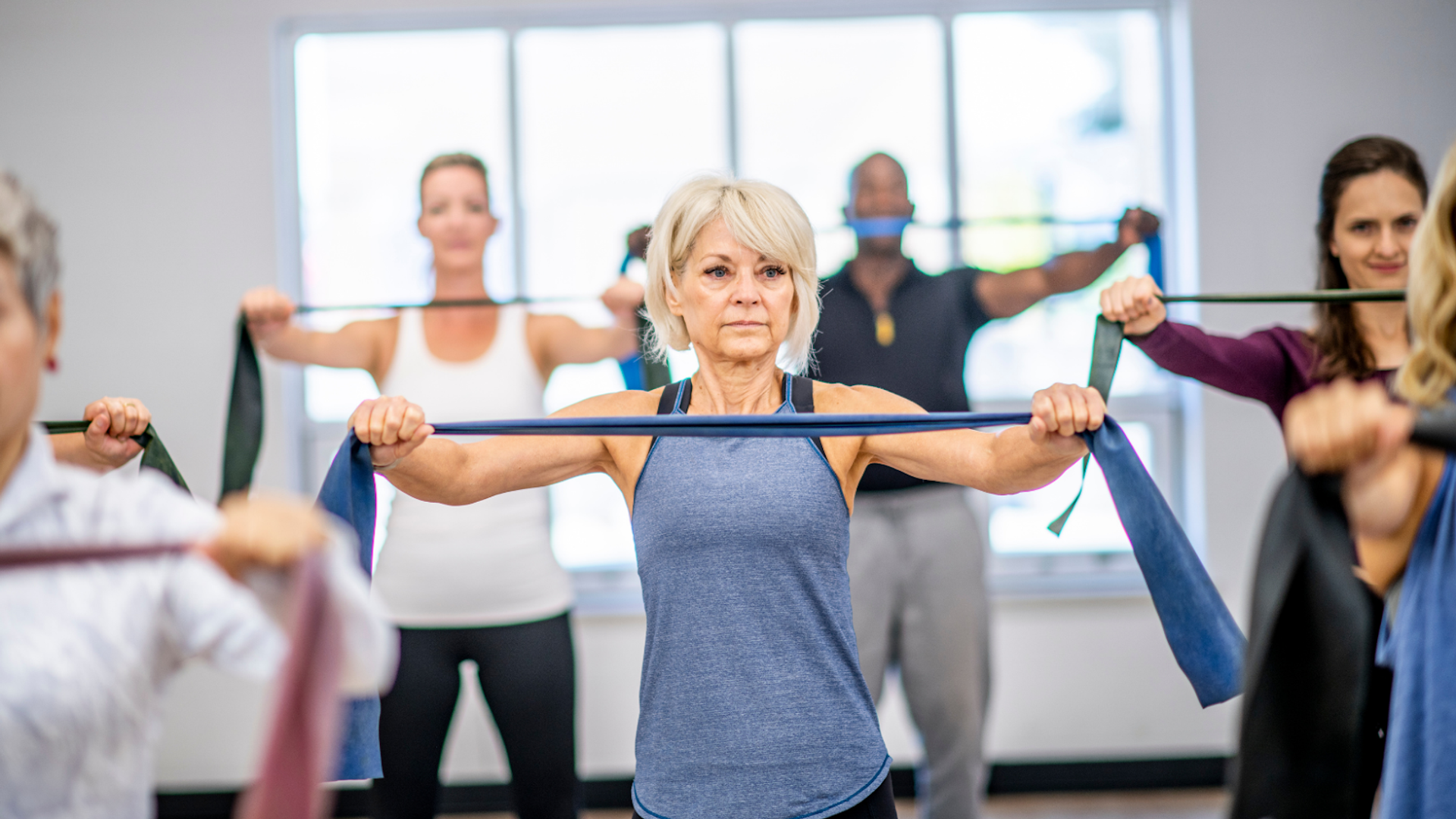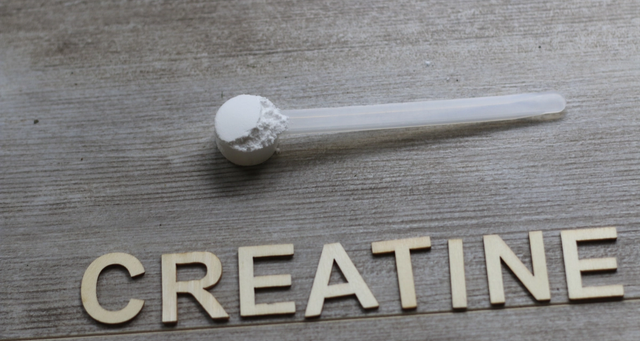Living a long and healthy life isn’t just about adding years but about ensuring those years are lived in good health and with vitality. As the pursuit of longevity becomes a priority for many, strength training emerges as a cornerstone of a balanced approach to aging well. For those over 50, or anyone looking to prioritize their health, strength training offers transformative benefits that go beyond aesthetics, touching nearly every aspect of physical and mental well-being.
What Is Strength Training, and Why Does It Matter?
Strength training, also known as resistance training, involves exercises designed to improve physical health, muscular strength and endurance by using resistance. This resistance can come from weights, resistance bands, or even body weight.
Unlike cardio workouts or aerobic fitness that focus primarily on heart health and calorie burn, strength training targets the muscles, bone mineral density, and metabolism, building a foundation for long-term health. But is strength training good for longevity? Research points to a resounding yes.
When incorporated into a well-rounded fitness routine, strength training can slow the natural aging process, protect against chronic disease, and improve overall functionality, making it a must for anyone aiming to age gracefully.
The Science Behind Strength Training and Longevity

Strength training isn't just about aesthetics or athletic performance; it's a powerful tool for extending your lifespan and, more importantly, your "healthspan" – the number of years you live in good health and vitality. Studies consistently show that maintaining or increasing muscle mass as we age contributes significantly to reduced risk of disease, injury, and disability by up to 17%! Here’s how it works:
Preserving Muscle Mass and Strength
Starting in your 30s, your body gradually loses muscle mass, a condition known as sarcopenia, which accelerates after age 50. This muscle loss affects mobility, balance, and independence, increasing the likelihood of falls and frailty. Strength training and physical activity combat sarcopenia by preserving and even rebuilding muscle, ensuring you stay active and capable throughout your life.
Bone Health and Osteoporosis Prevention
Resistance training doesn’t just build strong muscles—it also strengthens bone mineral density. When lifting weights, your bones adapt to the stress by becoming denser, leading to a reduced risk of fractures and osteoporosis. This is particularly vital for women and older adults, who experts report to be at higher risk for bone density loss.
Metabolic Benefits
Muscle is metabolically active, meaning it burns calories even at rest. Strength training sessions increase lean muscle mass, which can boost your resting metabolic rate and help regulate body weight. These metabolic improvements also lead to reduced risk of chronic diseases such as type 2 diabetes and obesity.
Improved Heart Health
While vigorous aerobic exercise often takes the spotlight for heart health, strength training offers complementary benefits. It improves blood circulation, lowers blood pressure, and supports overall cardiovascular function. Together with cardio, it forms a well-rounded approach to heart health.
Why Strength Training Is Essential After 50

Strength training becomes increasingly important as we age, serving as a cornerstone for maintaining physical and mental well-being. Beyond aesthetics, it offers tangible benefits that enhance your quality of life and protect against the challenges associated with aging. Here’s why:
Functional Independence
As we grow older, staying independent often hinges on our physical capabilities. Strength training helps maintain the muscle power required to perform everyday activities like lifting groceries, climbing stairs, or gardening. It also enables more joyful pursuits, such as playing with grandchildren or traveling, by keeping the body strong and agile. By preserving this functional strength, you can maintain autonomy and reduce reliance on others for routine tasks.
Falls Prevention
Falls are a leading cause of injuries in older adults, often resulting in fractures or long recovery periods that can lead to further muscle loss and complications. Strength training enhances muscle strength, balance, and coordination, significantly reducing the risk of falling. Exercises that focus on core and lower body strength, such as squats or step-ups, are particularly effective for improving stability and confidence in movement.
Mental Health Benefits
The mental benefits of strength training are just as profound as the physical ones. Research indicates that regular resistance exercises can alleviate symptoms of depression and anxiety, offering a natural boost to mood and emotional well-being. Setting and achieving goals, such as lifting heavier weights or mastering a challenging movement, builds confidence and mental resilience. This sense of accomplishment can spill over into other areas of life, promoting a positive mindset and a stronger sense of self-efficacy.
Incorporating strength and resistance training after 50 isn’t just about living longer—it’s about thriving in those years, staying active, engaged, and mentally sharp for all that life has to offer.
Aerobic Exercise vs. Resistance Training for Longevity
When it comes to longevity, the debate between vigorous aerobic exercise and resistance training often arises, but is there a definitive winner? The truth is that both play essential roles in promoting a long, healthy life. Rather than choosing one over the other, the most effective approach is a combination of both aerobic fitness and resistance exercises, as each offers unique benefits for different aspects of health and well-being.
How Aerobic Exercise Impacts Longevity
Aerobic exercise, such as walking, running, or swimming, is great for heart health, lung capacity, and endurance. It's a moderate-intensity exercise that helps improve circulation, maintain a healthy weight, and reduce the risk of cardiovascular disease and diabetes. Aerobic exercise also boosts mental clarity, reduces stress, and supports brain health by improving blood flow to the brain, lowering the risk of cognitive decline.
How Strength Training Impacts Longevity
Strength training focuses on muscle mass preservation, bone density, and metabolic health. It counteracts muscle loss due to aging, improves bone health, and reduces the risk of osteoporosis. Muscle strengthening activities and resistance exercises also increase metabolism, help manage weight, and lower the risk of type 2 diabetes. At the cellular level, strength training has many health benefits. It reduces inflammation and supports overall vitality, enhancing healthspan and slowing the aging process.
Combining Aerobic Exercise and Resistance Training
The best approach is a combination of both. While cardio improves heart and lung health, strength training builds muscle strength, supports bone mineral density, and boosts metabolism. Integrating both can provide comprehensive benefits, improving overall longevity and quality of life as we age. A balanced routine with both types of moderate exercise ensures lower cardiovascular disease risk, stronger muscles, and more resilient bones, contributing to a longer, healthier life.
Getting Started: Best Strength Training for Longevity

Starting a strength training routine doesn’t have to be intimidating. With a strategic approach, you can effectively implement strength training to enhance longevity and improve your overall health. Here's a step-by-step guide to muscle-strengthening activities:
Begin with Bodyweight Exercises
Bodyweight exercises are an ideal entry point, especially if you're new to strength training. Movements like squats, push-ups, lunges, and planks help build foundational strength and improve flexibility without the need for equipment. These types of moderate-intensity exercise targets multiple muscle groups, and they can be done anywhere, making them perfect for beginners.
Incorporate Free Weights or Resistance Bands
As you build strength, gradually introduce free weights (dumbbells or kettlebells) or resistance bands. These tools help target specific muscle groups and increase resistance progressively. Adding weights or bands will help enhance muscle development and increase the intensity of your workouts, ensuring continuous progress.
Focus on Major Muscle Groups
Concentrate on compound exercises that work multiple muscle groups simultaneously. Targeting large muscle groups helps maximize strength gains and improves functional fitness. Some effective moderate exercise options include:
- Squats and lunges (legs and glutes)
- Deadlifts and rows (back and hamstrings)
- Bench presses and shoulder presses (chest, shoulders, and triceps)
These exercises help maintain muscle balance and support overall body strength, which is key to aging well.
Train 2–3 Times Per Week
For optimal results, aim to train 2-3 times per week. This frequency allows sufficient time for muscle recovery and growth. Remember, rest is essential for preventing overtraining, reducing injury risk, and maximizing strength gains. With consistency, you’ll see progressive improvements in strength and muscle tone.
Work With a Professional
Consider working with a certified personal trainer, like those at Svetness, to ensure you're using the correct form, targeting the right muscle groups, and following a balanced program. A professional can customize a strength training plan based on your fitness level, goals, and any potential limitations, which can enhance your results while minimizing the risk of injury.
By following this step-by-step guide, you’ll be on your way to building strength, preserving muscle mass, and improving your healthspan for a longer, more active life.
Common Barriers and How to Overcome Them
Starting a strength training routine can come with its challenges, but understanding how to overcome common barriers can help you stay on track. Here are some practical solutions to keep you moving forward:
Barrier: Lack of Time
Svet Solution: Strength and resistance training doesn't require long sessions to be effective. Even 30-minute workouts, focusing on compound movements that target multiple muscle groups, can yield great results. By incorporating supersets or circuit training, you can maximize your workout in less time while still achieving strength and longevity benefits. Consider breaking up your workout into shorter sessions throughout the week to make it more manageable.
Barrier: Fear of Injury
Svet Solution: Start with lighter weights or bodyweight exercises to develop a solid foundation of strength and control. Prioritize proper form to prevent injury and gradually increase intensity as you build confidence. Incorporating dynamic warm-ups before training and cool-downs after your workout can significantly reduce the risk of strains and improve health and flexibility. Listening to your body and not rushing through physical activity is key to long-term progress.
Barrier: Limited Equipment
Svet Solution: You don’t need a fully equipped gym to benefit from strength training. Many effective exercises, such as squats, lunges, push-ups and forms of high-intensity interval training, can be done with just your body weight. Resistance bands and adjustable dumbbells are compact, versatile, and perfect for home workouts. These tools can be used to target specific muscle groups and increase the intensity of your workout, making them great alternatives when you have limited equipment at hand.
Embrace Strength Training for a Lifetime of Health
Strength and resistance training for longevity isn’t just about looking good—it’s about feeling strong, capable, and ready for whatever life throws your way. As more research emerges, the link between strength training and a longer, healthier life becomes increasingly clear.
For those ready to take the first step, organizations like Svetness provide tailored support and guidance to help individuals thrive.
Make strength training a part of your routine today. Not just for now, but for a lifetime of health and vitality.
FAQs
What form of physical activity increases longevity the most?
A combination of aerobic and muscle-strengthening exercises is considered the most effective for longevity. While moderate physical activity like walking or swimming enhances cardiovascular health, muscle-strengthening exercises (like resistance training) help preserve muscle mass, improve bone density, and reduce the risk of chronic diseases such as metabolic syndrome. Studies indicate that a strong emphasis on resistance exercise can reduce the risk of diseases like type 2 diabetes and even help lower the risk of lung cancer. This comprehensive approach supports overall health and enhances longevity.
How can strength training help with the risk factors of metabolic syndrome?
Strength training can significantly reduce the risk factors associated with metabolic syndrome, such as obesity, high blood pressure, and insulin resistance. Resistance exercises help increase lean muscle mass, which boosts metabolism and aids in better weight management. Regular physical activity, including strength training, can improve body composition by reducing fat mass and enhancing muscle strength, both of which help reduce the risk of chronic conditions like type 2 diabetes.
How does strength training help older adults with functional independence?
For older adults, strength training is critical for maintaining functional independence. As we age, muscle strength and mass naturally decline, making everyday activities like lifting groceries or climbing stairs more difficult. By incorporating resistance exercises into your routine, you can strengthen muscles, improve body composition, and prevent the loss of strength. This not only supports better mobility but also reduces the risk of falls, helping older adults maintain independence for a longer time.
How does resistance exercise support strong muscles for aging adults?
Resistance exercise is a crucial tool for supporting strong muscles as we age. It helps preserve and even rebuild muscle mass, counteracting the natural decline that occurs in older adults. By regularly engaging in muscle-strengthening exercises, older adults can maintain functional independence, reduce the risk of falls, and improve overall mobility. Strong muscles also support bone health, reducing the risk of osteoporosis and fractures.
How can strength training help reduce the risk of chronic disease?
Strength training, as part of a comprehensive fitness routine, reduces the risk of numerous chronic diseases by improving body composition, boosting metabolism, and enhancing cardiovascular health. Muscle-strengthening activities can help prevent conditions like obesity, diabetes, and metabolic syndrome by regulating blood sugar levels, improving insulin sensitivity, and promoting fat loss. Additionally, resistance exercises strengthen the muscles, which in turn supports the skeletal system and reduces the risk of osteoporosis and falls.
Start your Svetness journey today
Get a free consultation and see how our trainers can transform your wellness journey.






